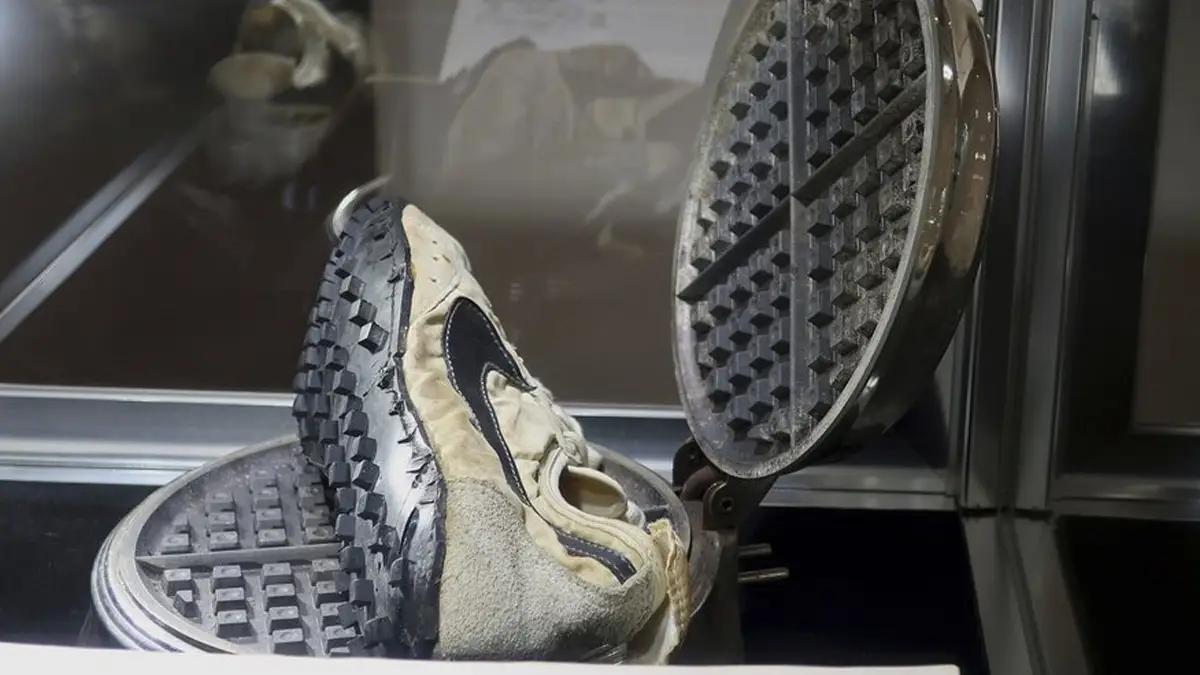
The Narrative Backbone of Your Company: 4 Stories That Shape Your Culture
One morning in 1971, Bill Bowerman sat at the kitchen table patiently waiting for his breakfast and thinking about a problem that consumed him at the time – creating athletic shoes with a better grip.
When his wife put a plate of freshly made waffles in front of him, it was as if an invisible force suddenly hit Bowerman. He leapt out of his chair, bolted to the garage, and returned to the kitchen with two cans of synthetic resin. To his wife’s dismay, he proceeded to pour the contents of both cans of resin into the family’s waffle iron. This is how the Nike waffle shoe was born. It was also the moment when the trajectory of the athletic footwear industry changed forever.
Nike’s origin story is one of the most well-known out there. But it’s not only famous brands like Nike that can benefit from the power of storytelling.
Every company has powerful stories to tell and can turn them into what they were meant to be in the first place — a narrative compass for company culture.

The power of storytelling to shape culture
Storytelling is in our DNA. It’s how we make sense of the world. It is also the most engaging, reliable and participative way to uncover the authentic cultural DNA of a company and get input on how its culture will need to change to continue supporting the organisation’s purpose as the business grows and evolves.
I’ve been using stories to help companies codify and evolve their culture for years and would never go back to using more traditional methods.
In this article, I will share four types of stories you should focus on to identify and reinforce your company’s authentic cultural DNA: the origin story, transformation stories, stories of adversity and triumph, and the story of your future.
The origin story
The origin story is more than just a colourful part of your corporate folklore; it’s the genesis of your company’s values and purpose.
Nike’s origin story shows that its founder, Bill Bowerman, was obsessed with helping athletes improve their performance. This obsession with contributing to better athletic performance is still at the core of what Nike is today and is reflected in the company’s mission statement: “To bring inspiration and innovation to every athlete in the world.”
A good origin story is inspiring, authentic, and reflective of the company’s values and mission. It should help employees and customers understand what the company stands for and why it exists.
A great example of an origin story is that of Warby Parker. They get extra brownie points for having a 100-word version that they print on the cleaning cloth that comes with every pair of glasses they sell.

Transformation stories
Transformation stories are the stories of your impact on clients, team members, and the world at large. These stories demonstrate how you strive to improve things for those who matter most to you.
A good transformation story follows a highly effective “before and after” format.
A before-and-after story is powerful because it creates a clear and relatable narrative structure that allows people to understand the journey or transformation that has taken place. It provides a contrast between the past and present, highlighting the impact you’ve had as a company or as a team.
A transformation story is particularly effective because it taps into our innate desire for improvement and growth. It’s relatable, inspirational, and provides a clear structure for communicating change and progress.
The best transformation stories often focus on individuals. Here are a few examples:
- Patagonia: In 2018, Patagonia partnered with the Colorado River Indian Tribes to help them regain control of their land and water rights. Through this partnership, Patagonia helped to protect the Colorado River and preserve the cultural heritage of the tribes. This initiative has changed the lives of the tribal members by ensuring their continued access to clean water and the ability to use their land for traditional practices.
- Warby Parker: Warby Parker has helped countless people improve their vision through their Buy a Pair, Give a Pair program. One individual story is that of a young girl in Rwanda who received a pair of glasses through the program. Before receiving the glasses, she was struggling in school and was at risk of dropping out. After receiving the glasses, her grades improved, and she was able to continue her education. This program has changed the lives of many people around the world by improving their vision and enabling them to participate fully in school, work, and other activities.
- Toms: Toms has helped to improve the lives of people in need around the world through their One for One program. One individual story is that of a young girl in Ethiopia who received a pair of Toms shoes through the program. Before receiving the shoes, she had to walk long distances to school in bare feet, which made her vulnerable to injury and infection. After receiving the shoes, she was able to walk to school safely and comfortably, which improved her attendance and performance in school. This program has changed the lives of many people around the world by providing them with basic necessities that they may not have had access to otherwise.
Stories of adversity and triumph
In 2013, Target, the retail giant, suffered a massive data breach that affected millions of customers. Hackers gained access to Target’s payment system and stole credit and debit card information, as well as personal data such as names, addresses, and phone numbers.
The breach was a major crisis for Target, and the company faced intense scrutiny and criticism from customers, the media, and regulators.
However, Target’s response to the breach was widely praised as an example of effective crisis management. The company quickly took steps to address the breach and prevent further damage, including hiring a new chief information security officer and implementing new security protocols and technologies.
Target also took responsibility for the breach and communicated openly and transparently with customers about the steps it was taking to address the issue. The company offered free credit monitoring to affected customers and established a hotline for customers to call with questions or concerns.
Through these efforts, Target was able to regain the trust of its customers and rebuild its reputation as a trustworthy and secure retailer.
Stories of adversity and triumph illustrate challenges, setbacks, or difficult situations faced by a company or its employees. They often highlight the resilience, perseverance, and problem-solving skills of the team in the face of adversity. They showcase the values that guide the team when under pressure, and these stories are so informative because, as the saying goes: “It is in a crisis that character is revealed.“
The story of your future
Imagine that your company is featured on a prestigious magazine cover as one of the top 10 players in your industry. What would be the title of that article? How about subheadings? What would the sidebars contain? Whom would the article quote, and what would they say about your business? What images would accompany the feature? Why are they important? What was the role that culture played in your success?
We often ask the senior leadership team these questions to create a vivid vision of the company’s future and then socialise the story with the rest of the organisation.
Crafting the story of your future is not just an exercise in imagination, it’s a critical tool for driving the success of your organisation. It helps you clarify your goals and articulate your vision, and it gives your team a sense of purpose and direction. By bringing your story to life with compelling subheadings, quotes from industry experts, and powerful imagery, you can inspire your team to work towards a shared goal and create a culture that supports your vision.
In summary
Stories are powerful tools that can shape your company’s culture and help you scale your business more sustainably. By leveraging the stories above, you can uncover your unique cultural DNA and create a narrative compass for your company’s cultural evolution, driving employee engagement, loyalty, and performance.
If you are curious to learn more about how to use stories in your culture work, you might be interested in our accreditation program for culture practitioners. You can find more details HERE.
Want more tips on evolving culture?
Subscribe to my newsletter, the CultureLab Insider, and get the new blog posts, podcast episodes
and other free resources delivered to your inbox every Tuesday.
